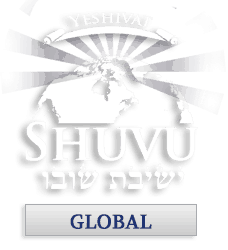וְאָֽמַרְתָּ֣ לָהֶ֔ם זֶ֚ה הָֽאִשֶּׁ֔ה אֲשֶׁ֥ר תַּקְרִ֖יבוּ לַֽיהֹוָ֑ה כְּבָשִׂ֨ים בְּנֵֽי־שָׁנָ֧ה תְמִימִ֛ם שְׁנַ֥יִם לַיּ֖וֹם עֹלָ֥ה תָמִֽיד: אֶת־הַכֶּ֥בֶשׂ אֶחָ֖ד תַּֽעֲשֶׂ֣ה בַבֹּ֑קֶר וְאֵת֙ הַכֶּ֣בֶשׂ הַשֵּׁנִ֔י תַּֽעֲשֶׂ֖ה בֵּ֥ין הָֽעַרְבָּֽיִם: וַֽעֲשִׂירִ֧ית הָֽאֵיפָ֛ה סֹ֖לֶת לְמִנְחָ֑ה בְּלוּלָ֛ה בְּשֶׁ֥מֶן כָּתִ֖ית רְבִיעִ֥ת הַהִֽין: עֹלַ֖ת תָּמִ֑יד הָֽעֲשֻׂיָה֙ בְּהַ֣ר סִינַ֔י לְרֵ֣יחַ נִיחֹ֔חַ אִשֶּׁ֖ה לַֽיהֹוָֽה:
And you shall say to them: This is the fire offering which you shall offer to the Lord: two unblemished lambs in their first year each day as a continual burnt offering. The one lamb you shall offer up in the morning, and the other lamb you shall offer up in the afternoon. And one tenth of an ephah of fine flour for a meal offering, mixed with a quarter of a hin of crushed [olive] oil. A continual burnt offering, as the one offered up at Mount Sinai, for a spirit of satisfaction, a fire offering to the Lord.
Numbers 28:3-6
This week’s Torah portion contains one of the most important sections of the Torah with regard to modern Judaic practice. It is a listing of the sacrifices and offerings to be done by Israel, as a nation. The listing of offerings is from the perspective of the Mishkan, and Temple.
Leviticus 23 lists the sacrifices and offerings from a completely different perspective, from the perspective of the individual. Here in Numbers 28-29, the sacrifices and offerings are presented regarding the duties of the Kohayns rather than the duties of the individual. For instance, in Leviticus, no mention is made of the sacrifice of the bulls of Sukkot. The sacrifices of the bulls are a duty of the Kohayns, nobullsare brought by individuals on Sukkot. In Numbers 29, the sacrifice of the bulls for Sukkot is listed because it is a duty of the Kohayns.
Since the time of the destruction of the Temple, we’ve been unable to perform these sacrifices and offerings listed in this week’s Torah portion. The men of the great assembly, the Anshei Knesset HaGdola, determined that rather than ignore a commandment we are unable to fulfill, we should commemorate it. So, the synagogue service was created to commemorate the sacrifices and offerings listed in numbers 28 and 29. The basis of all Judaic practice today is in this week’s Torah portion. Every synagogue service of the year has its corresponding sacrifices and offerings listed.
During this season, when we are Bein HaMitzarim, “between the Straits,” we have to take time to remember the temple, and its sacrifices and offerings. The Shacharit synagogue service is a commemoration of the Shacharit (Dawn) sacrifices presented every single morning. May the Temple be rebuilt soon, and in our days. Shabbat Shalom.
